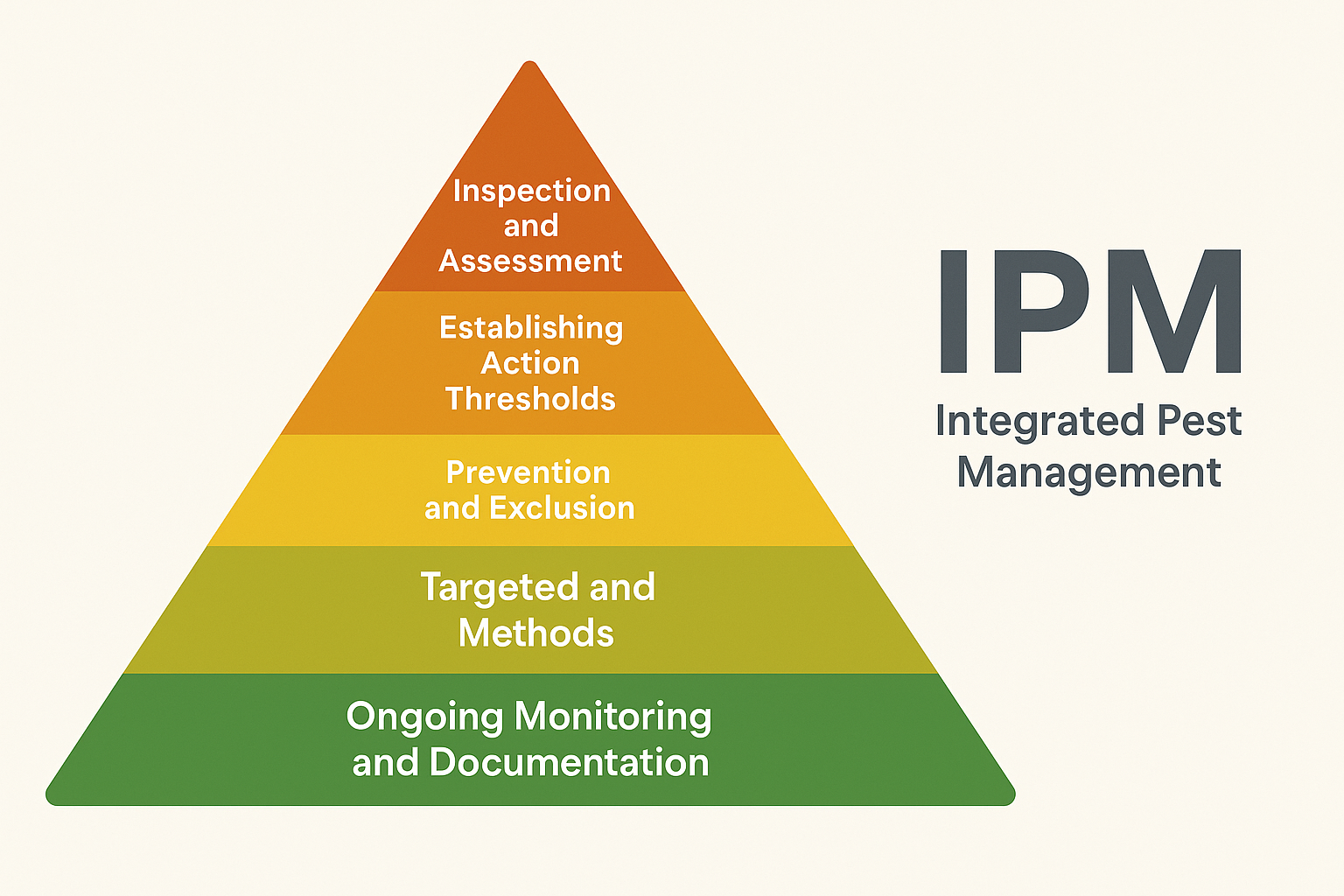The Importance of Integrated Pest Management (IPM): A Smarter Approach to Pest Control
In today’s pest control landscape, simply spraying chemicals is no longer considered the gold standard — nor is it always effective in the long run. That’s where Integrated Pest Management (IPM) comes in.
IPM is more than just a buzzword — it's a comprehensive, science-based approach that prioritizes long-term prevention and minimal risk to people, property, and the environment. For pest control professionals, understanding and applying IPM is not only good practice — it’s essential for modern, sustainable pest management.
In the video below, A.C.E. & industry expert, Nathan Fushour, discusses many of the IPM topics in the article below. Check it out and continue reading for more info.
More videos like this with hours and hours of training in Pest Pro University courses.
Why IPM Matters in Professional Pest Control
Integrated Pest Management is built on the principle of addressing the root cause of pest problems, not just treating the symptoms. Instead of defaulting to chemical solutions, IPM takes a layered approach that emphasizes prevention, monitoring, education, and precise interventions.
For pest control companies, IPM offers:
More effective, long-term results
Reduced chemical use and environmental impact
Compliance with regulatory standards (especially in schools, healthcare, and food facilities)
Greater client trust and satisfaction
In short, IPM leads to smarter service, safer environments, and better business.
Different organizations teach different approaches to IPM. Some have 5 steps, some have 7, the “IPM triangles” you will see online can flow up or down, but the basics are the same. The steps in this article are some of the more common you will see.
The Core Steps of Integrated Pest Management (IPM)
1. Inspection and Assessment
Every IPM plan starts with a thorough inspection. This step involves identifying:
The type of pest(s) present
Areas of activity or damage
Entry points and attractants
Environmental conditions contributing to infestations
Technicians should document their findings using checklists, digital tools, or client-facing reports to establish a baseline.
🔍 Tip: Use monitoring tools like glue boards, pheromone traps, or light traps to gather data over time, not just during service calls.
2. Correct Pest Identification
Accurate pest ID is crucial. You can’t control what you don’t understand. Identifying the species helps determine:
The pest’s life cycle
Preferred harborage areas
Feeding habits
Seasonal behaviors
This knowledge ensures that your control strategy targets the right pest — and avoids harming non-target organisms.
3. Establishing Action Thresholds
An action threshold is the point at which pest activity requires intervention. Not all sightings call for treatment — sometimes, the best response is continued monitoring.
This step helps clients understand that pest management isn’t about “zero tolerance” — it’s about keeping populations below harmful or unacceptable levels, especially in sensitive environments.
4. Prevention and Exclusion
One of the most powerful IPM tools is preventing pests from getting inside in the first place. Common strategies include:
Sealing cracks, gaps, and utility openings
Installing door sweeps and window screens
Improving sanitation and waste management
Correcting moisture issues (e.g., leaks, standing water)
Professionals should walk clients through these recommendations during service calls, and even offer in-house exclusion services to add value.
5. Targeted Control Methods
When intervention is necessary, choose the least-risk, most effective method available. Options include:
Biological controls: Beneficial insects, microbial agents
Mechanical controls: Traps, vacuums, barriers
Cultural controls: Changing client behavior or routines (e.g., food storage, clutter removal)
Chemical controls: Used only when necessary — and with precision
If chemicals are applied, use:
Baits instead of sprays
Crack-and-crevice or spot applications
EPA-reduced risk or green-labeled products when possible
🎯 The goal is targeted disruption, not blanket coverage.
6. Ongoing Monitoring and Documentation
IPM is a continuous process, not a one-time fix. Set up routine monitoring to evaluate:
Whether the treatment worked
If pest pressure is returning
New risk factors developing on-site
Document all actions and observations in client records or service reports — this helps with compliance, client communication, and internal quality control.
IPM in Practice: Real-World Applications
Restaurants: Focus on sanitation training, fly exclusion, and grease management before deploying sprays.
Schools: Use tamper-proof bait stations, rodent-proofing, and staff education to reduce risk in child-sensitive zones.
Multi-unit housing: Educate tenants, eliminate entry points, and track infestations floor by floor.
In each of these scenarios, IPM provides customized, effective, and defensible pest control.
Final Thoughts: IPM Is the Future of Pest Control
Integrated Pest Management isn’t just a method — it’s a mindset. It challenges us to think critically, act responsibly, and deliver solutions that go beyond the chemical bottle. For pest control companies and technicians, IPM means staying ahead of the curve, building trust with clients, and achieving control that lasts.
**Always follow local, state, and federal laws when applying pest control products. Use proper personal protective equipment (PPE) and strictly adhere to all product label instructions—the label is the law.
Ready to refine your IPM program and train your team?
Subscribe to Pest Pro University for in-depth training for technicians, office staff, and more.


